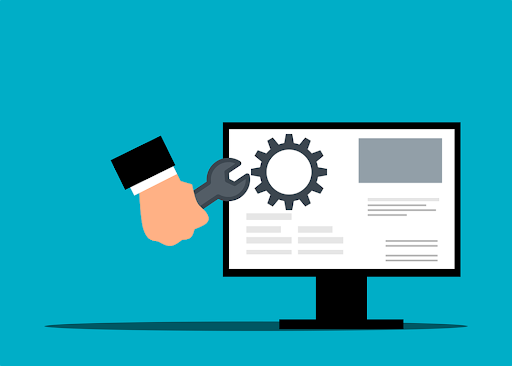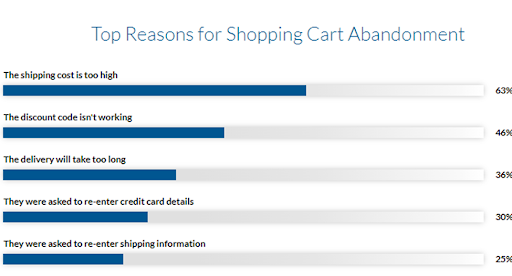Complete Guide to Maintaining Your ECommerce Website
An eCommerce website is a shop front, a sales counter and a marketing platform all rolled into one. It’s as valuable to an online business as a physical store is to a brick-and-mortar firm.
But just like any valuable business asset or premises, a website needs upkeep and maintenance. Website owners can’t afford to let a site lose its shine. Customers notice when the blog posts are from five years ago, the homepage looks tired, and products and offers aren’t updated.
If you don’t maintain your website, the result can be as off-putting as a store window full of dust and a salesroom with peeling paintwork and tired-looking displays. However, making sure your eCommerce website portrays your business’s best side takes effort, thought, and time.
But with a bit of planning and a workable routine, maintaining your eCommerce website can become a healthy habit, and it can make both your retail operations and your online presence run more smoothly.
Website Maintenance, What is it Exactly?
If you’ve ever used a website with glitches, broken links, or where functionality meant you couldn’t find what you wanted or see what action to take, the website was probably poorly maintained.
This unpleasant user experience clearly signals that the website owner hasn’t taken the trouble to check in and try out the customer experience they are offering in quite a while.
Website maintenance boils down to this; put yourself in a user’s shoes, walk through your site, try to find a specific item or service, and have a go at making a purchase or booking. Take note of anything that’s broken or works poorly, and look for out-of-date content that needs updating.
There is the technical side of your website underpinning the customer experience. Though invisible to customers, updates, website speed, and security all need to be monitored to ensure your eCommerce website is in good health. Keep up to date with software, carry out web app security testing, and regularly check the loading speed for payment screens and video content.
Benefits of Website Maintenance
Maintaining your eCommerce website has various direct benefits to your business. It may not seem as glamorous as planning your next product launch, but good maintenance also leads to sales. Let’s look at the gains in conducting regular maintenance one by one.
Better Customer Experience
Unhappy customers will not translate to sales and bookings, so giving consumers a user-friendly and well-maintained website is vital to your profits. It takes seconds for a customer to be worn over or put off by a website. Having a landing page that says who you are, where to find and purchase items, and has clear calls to action in every section, will attract and keep customers.
Always make sure your software developer knows your business needs when setting up your website in the first place. Having a website that functions for your particular business and your sector is a vital foundation. But keeping those needs in mind is also key to maintaining your eCommerce site.
Maintenance helps keep customer expectations and what your company delivers aligned. The quality of the content you put on your website plays a massive role in building your brand image and customer base.
Customers don’t want to reach a website that bombards them with popup adverts. Make sure content sells in a smarter way, informing, entertaining, and catering to customers’ interests. Update content often, make sure it’s top-notch, and don’t let posts or images become familiar and therefore ignored like wallpaper.
Enhancing Your Google Ranking
If you update and maintain your website infrequently, you could find that what you have to offer slips so far down the search engine ranking, that your business becomes invisible. It is obviously a disaster for an eCommerce firm.
To be up at the top of Google’s ranking, you need a well-maintained, fast, glitch-free website. The better your website functions for users, the more visibility and traffic it will get. Ultimately, you want more leads to your website, something a poorly maintained website certainly won’t deliver.
Where your website sits on search engine results relies on keywords, titles, and the caliber of other websites competing for the same space. Regularly updating features on your website as part of your maintenance will help keep your site rising to the top.
The good news is it’s not always necessary to write completely new content, although new content is always a winning move. You can, however, opt for refreshing content, incorporating new keywords and updating titles, or including high-quality backlinks. Responding to trends and new developments and moving with the flow of consumer interest is a great way to improve your ranking.
Reduce Cart Abandonment
There are various reasons a customer might put an item in their online cart and then change their mind about purchasing. Technical glitches like being asked to enter card details more than once or a payment screen taking too long to load allow a cool-off period and give customers a reason to reconsider.
It’s impossible to make sure every full cart results in a sale, but some issues that deter customers from buying are due to poorly maintained websites and a less than optimal online shopping experience, like not providing multiple payment options. Many consumers want to pay via Paypal, credit cards, and even cryptocurrencies like Bitcoin and Ethereum. Integrate your eCommerce site with these payment apps to give customers the options they want.
Another issue customers face is a poor purchase journey, where an item appears to be available, but when they get to the purchase stage, the consumer finds it’s out of stock. A website owner can fix this by keeping stock levels up to date using, for example, the shopify inventory app. Frustration is no friend to sales, don’t let an out-of-date inventory disappoint and irritate your valuable customers.
Improving Security
Failing to maintain security leaves your website prone to hackers and other cyber-attacks. You risk losing data, customer trust, and brand reputation if you neglect security updates and maintenance by your web hosting provider.
On the flip side, your website could be flagged as a security risk to other internet users if it’s not updated or has lapsed security measures. It could negatively affect traffic to your site and overall sales.
Checking and maintaining the security measures reassures customers. If they feel safe using your site, they’ll keep coming back.
Maintenance Checklist
So, there’s a fair amount to think about when it comes to maintaining an eCommerce website, but let’s break it down into a handy checklist, which you can use as a guide.
Bear in mind that every business and website is different, so it’s good to develop a more personalized list of actions for your own company. Making time to create and use a checklist is as vital as investing in new accounting and inventory software or planning your marketing strategy. It’s worth the investment of your time.
In addition to creating a checklist, you can also prepare a complete website maintenance video guide using free resources and video templates online.
Once a Week
It’s a good idea to create an offsite backup. If the worst happens, make sure you have all your content and data saved. Carry out updates of software and plugins.
Once a Month
Review your security and make sure your blog posts are still relevant and on-trend. Test your page speed and make sure this is up to the job.
Every Six Months
Look over your images and content like testimonial videos, and make sure they are still working for you. Make time to update them if not. Assess your calls to action, titles, and descriptions. Do they need updating?
Once a Year
Check to see if the website as a whole needs an update or a change of image. Make sure you have content that looks to the year ahead and prune content that names the calendar year just gone. Once a year is also a good point to review your website’s marketing. It might be time for a new approach like a b2b partner marketing strategy.
Building a Maintenance Habit Will Facilitate Success
When you think about starting up an online business, you are well aware of the importance of a good website. It’s worth the time and money to hire the right designers and engineers, and it’s vital to get the right producers in content production, marketers, and writers to make your site vibrant and attractive. For an eCommerce business, the website is the fundamental element of the enterprise.
But given its importance, it is surprising how little thought many companies give to the website once it’s up and running. However, some simple, frequently executed tasks could make a difference to your website’s security, visibility, and effectiveness. It can have a massive impact on your profit margins.
Developing a regular website maintenance habit is beneficial for your eCommerce business. After all, you wouldn’t expect to buy a house and never carry out any repairs or improvements. Likewise, one trip to the gym doesn’t keep you fit for a lifetime. Keep your website well maintained, and the benefits will keep coming.
About the author:
Nick Shaw – Brightpearl. Nick Shaw has been Chief Revenue Officer (CRO) of Brightpearl, the number one retail-focused digital operations platform which encompasses sales and inventory management software, ecommerce shipping solutions, accounting, logistics, CRM, and more, since July 2019 and has been responsible for EMEA Sales, Global Marketing and Alliances. Before joining Brightpearl, Nick was GM and Vice President of the EMEA Consumer business at Symantec and was responsible for a $500m revenue business. Nick has written for sites such as Hubspot and G2. Here is Nick Shaw’s LinkedIn.






